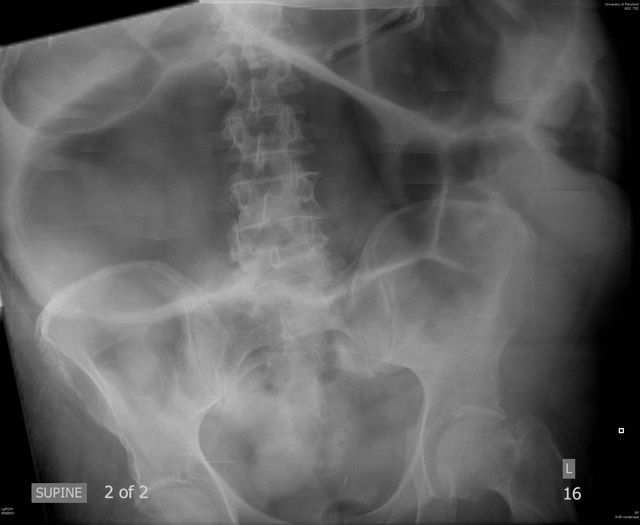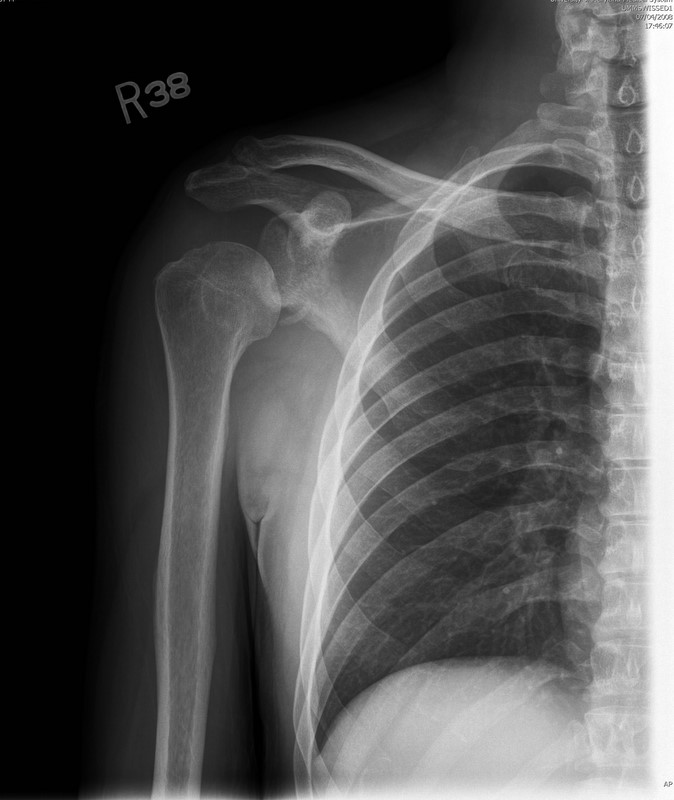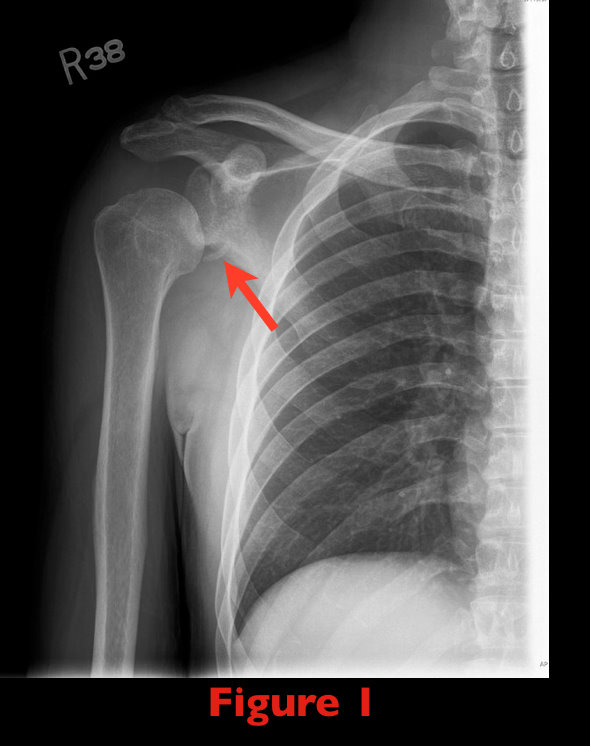Category: Critical Care
Keywords: staphylococcal aureus, aminoglycoside, monotherapy, combination therapy (PubMed Search)
Posted: 4/19/2011 by Mike Winters, MBA, MD
(Updated: 12/5/2025)
Click here to contact Mike Winters, MBA, MD
Combination Antimicrobial Therapy for Gram (+) Bacteremia
Abad CL, Kumar A, Safdar N. Antimicrobial therapy of sepsis and septic shock - When are two drugs better than one? Crit Care Clin 2011;27:e1-e27.
Category: Cardiology
Keywords: dabigatran, anticoagulant, thrombin inhibitor (PubMed Search)
Posted: 4/17/2011 by Amal Mattu, MD
(Updated: 12/5/2025)
Click here to contact Amal Mattu, MD
Dabigatran is a new oral anticoagulant (direct thrombin inhibitor) which is being marketed as the new drug to replace warfarin in many cardiac patients. You'll hear much more about it in the coming year, but for now you should know the main advantage and disadvantage:
1. advantage: no need to check levels, e.g. INRs
2. disadvantage: no reversal agent; if a patient is actively bleeding, all you can do is to hold further doses and provide supportive therapy, e.g. tranfusions; hemodialysis is another option, but not ideal to place new dialysis catheters emergently in patients that are coagulopathic!
This second point, the disadvantage of having no reversal agent, is potentially a big issue, especially in older patients at risk for falls. Stay tuned for more information...
Category: Orthopedics
Keywords: Gout (PubMed Search)
Posted: 4/10/2011 by Brian Corwell, MD
(Updated: 4/16/2011)
Click here to contact Brian Corwell, MD
Gout Part 2
Man CY, Cheung IT, Cameron PA, Rainer TH. Comparison of oral prednisolone/paracetamol and oral indomethacin/paracetamol combination therapy in the treatment of acute gout like arthritis: a double-blind, randomized, controlled trial. Ann Emerg Med. 2007;49:670-677.
Category: Toxicology
Keywords: latex, allergy, kiwi, cross-reactivity (PubMed Search)
Posted: 4/13/2011 by Bryan Hayes, PharmD
(Updated: 4/14/2011)
Click here to contact Bryan Hayes, PharmD
Kiwi fruit and latex share several antigens in common. Thus, individuals who are allergic to either kiwi or latex may also suffer hypersensitivity reactions to the other material.
Murali MR, et al. Case 9-2011: A 37-year old man with flushing and hypotension. N Engl J Med 2011;364(12):1155-65.
Category: Neurology
Keywords: meningitis, prophylaxis, meningococcemia (PubMed Search)
Posted: 4/13/2011 by Aisha Liferidge, MD
Click here to contact Aisha Liferidge, MD
Category: Critical Care
Keywords: Vancomycin, Daptomycin, Linezolid, MRSA, gram positive, infections, sepsis, pneumonia (PubMed Search)
Posted: 4/12/2011 by Haney Mallemat, MD
Click here to contact Haney Mallemat, MD
Vancomycin is often started empirically for gram-positive and MRSA coverage. Although effective and generally well-tolerated, emerging resistance and side-effect profiles limit its use in some patients. Two alternatives are Linezolid and Daptomycin.
Linezolid
Daptomycin
Alder, J. The Use of Daptomycin for Staphylococcus Aureus Infection in the Critical Care Medicine. Crit Care Clin 24(2008); 349-363.
Category: Visual Diagnosis
Posted: 4/10/2011 by Haney Mallemat, MD
(Updated: 4/11/2011)
Click here to contact Haney Mallemat, MD
60 y/o male transferred from local rehab facility c/o abdominal pain.

Ogilvie's syndrome / Acute colonic pseudo-obstruction (ACPO)
Syndrome of decreased GI motility believed to be an autonomic imbalance (specifically, parasympathetic suppression) predominantly in the cecum and right colon. ACPO is also commonly due to narcotic overuse / abuse.
Differential diagnosis:
Abdominal XR:
Treatment:
Fazel A, Verne GN. New solutions to an old problem: Acute colonic pseudo-obstruction. JClin Gastroenterol 2005; Vol 39(1): 17-20.
Ozkurt H, Yilmaz F, et al. Acute colonic pseudo-obstruction (Ogilvie's syndrome): radiologic diagnosis and medical treatment with neostigmine. Report of 4 cases. Am J of Emer Med 2009; Vol 27: 757.e1 - 757e4.
Category: Geriatrics
Keywords: geriatrics, polypharmacy, elderly (PubMed Search)
Posted: 4/10/2011 by Amal Mattu, MD
Click here to contact Amal Mattu, MD
We already know that polypharmacy is a big issue in the elderly, but here are a few key points to keep in mind:
1. Adverse drug effects are responsible for 11% of ED visits in the elderly.
2. Almost 50% of all adverse drug effects in the elderly are accounted for by only 3 drug classes:
a. oral anticoagulant or antiplatelet agents
b. antidiabetic agents
c. agents with narrow therapeutic index (e.g. digoxin and phenytoin)
3. 1/3 of all adverse-effect-induced ED visits are accounted for by warfarin, insulin, and digoxin.
4. Up to 20% of new prescriptions given to elderly ED patients represents a potential drug interaction.
The bottom line here is very simple--scrutinize that medication list and any new prescriptions in the elderly patient!
Samaras N, Chevalley T, Samaras D, et al. Older patients in the emergency department: a review. Ann Emerg Med 2010;56:261-269.
Category: Orthopedics
Keywords: Knee Dislocation, Prosthetic (PubMed Search)
Posted: 4/9/2011 by Michael Bond, MD
(Updated: 12/5/2025)
Click here to contact Michael Bond, MD
Knee dislocations are uncommon, and prosthetic knee dislocations even rarer. Some general facts about prosthetic knee dislocations are:
Wang CJ, Wang HE. Dislocation of total knee arthroplasty: a report of 6 cases with 2 patterns of instability. Acta Orthop Scand 1997;68:282-285.
Stiehl JB, Komistek RD, Dennis DA, et al. Fluoroscopic analysis of kinematics after posterior-cruciate-retaining knee arthroplasty. J Bone Joint Surg Br 1995;77:884-889.
Category: Pediatrics
Keywords: magnesium toxicity, neonatal hypotonia, neonate, intubation, neonatal resuscitation (PubMed Search)
Posted: 4/8/2011 by Adam Friedlander, MD
Click here to contact Adam Friedlander, MD
So the magnesium didn't work, and the baby is on the way! You're prepared with everything you need for the delivery from bulb suction to a tripod for Dad's camera... But what is going to special about this baby?
Babies born to mothers who received magnesium therapy for any reason are at risk for hypotonia and severe respiratory depression.
Special thanks to Dr. Mimi Lu for the reference above
Category: Toxicology
Keywords: radiation, iodide, KI, thyroid, iodine-131 (PubMed Search)
Posted: 4/7/2011 by Ellen Lemkin, MD, PharmD
Click here to contact Ellen Lemkin, MD, PharmD
· In the event a nuclear power plant accident, people may be exposed to a mixture of radioactive products. The main radionuclides representing health risk are radioactive caesium and radioactive iodine.
· Iodine-131 is concentrated in the thyroid gland and may eventually lead to development of thyroid nodules and thyroid cancer.
· Radioiodine uptake by the thyroid can be blocked by taking potassium iodide (KI) pills or solution, preventing these effects.
· KI should not be taken in the absence of a clear risk of exposure to a potentially dangerous level of radioactive iodine because KI can cause allergic reactions, skin rashes, salivary gland inflammation, hyperthyroidism or hypothyroidism.
· Since radioactive iodine decays rapidly, current estimates indicate there will not be a hazardous level of reaching the United States from this accident.
· There are three FDA approved KI products: Iosat, Thyrosafe and ThyroShield.
http://www.who.int/hac/crises/jpn/faqs/en/index2.html
briefs.com/briefs/ATAORG/ATAORG031611.php
Pharmacist's Letter April 2011 Vol 27(4) 19-20.
Category: Neurology
Keywords: trigeminal neuralgia, headaches (PubMed Search)
Posted: 4/6/2011 by Aisha Liferidge, MD
(Updated: 12/5/2025)
Click here to contact Aisha Liferidge, MD
Category: Infectious Disease
Keywords: infection, cirrhosis (PubMed Search)
Posted: 4/4/2011 by Rob Rogers, MD
(Updated: 12/5/2025)
Click here to contact Rob Rogers, MD
Hemorrhagic bullae in an ill-appearing patient with underlying cirrhosis should prompt consideration for an invasive infection due to Vibrio vulnificus.
V. Vulnificus is a gram negative rod and causes a highly lethal infection in patients with cirrhosis.
Antibiotics for these patients should include coverage for this organism. This should include doxycycline and a third genaration cephalosporin.
1. Evidence-Based Medicine: 500 Clues to Diagnosis and Treatment, Ellerin and Diaz
2. CDC
Category: Cardiology
Keywords: prosthetic, valve, paravalvular leak, hemolysis (PubMed Search)
Posted: 4/3/2011 by Amal Mattu, MD
Click here to contact Amal Mattu, MD
Severe hemolysis/hemolytic anemia in a patient with a prosthetic cardiac valve suggests a paravalvular leak. In this condition, a portion of the valve becomes dislodged from the valve annulus. It can occur immediately after surgery or delayed if from endocarditis. Paravalvular leaks are more common with mechanic valves. Patients may also present with sudden pulmonary edema.
The treatment will focus on management of the pulmonary edema and prompt surgical repair.
Category: Pharmacology & Therapeutics
Keywords: enoxaparin, VTE, obese, low molecular weight heparin (PubMed Search)
Posted: 4/1/2011 by Bryan Hayes, PharmD
(Updated: 4/2/2011)
Click here to contact Bryan Hayes, PharmD
For patients with normal renal function, enoxaparin dosing for treatment of VTE is 1 mg/kg subcut every 12 hours OR 1.5 mg/kg subcut every 24 hours.
Studies have evaluated dosing for patients weighing up to 190 kg and found the 1 mg/kg q 12 hours dose to be safe and effective. It can even be used for patients heavier than 190 kg, but anti-Xa monitoring is recommended.
Nutescu EA, Spinler SA, Wittkowsky A, et al. Low-molecular-weight heparins in renal impairment and obesity: available evidence and clinical practice recommendations across medical and surgical settings. Ann Pharmacother 2009;43(6):1064-83.
Category: Toxicology
Keywords: phenytoin, vinca alkaloids, (PubMed Search)
Posted: 3/31/2011 by Fermin Barrueto
(Updated: 12/5/2025)
Click here to contact Fermin Barrueto
Extravasation from radiocontrast, phenytoin and promethazine have resulted in significant tissue necrosis sometimes requiring surgical debridement and reconstructive plastic surgery.
Pearl: Keep the infiltrated peripheral IV in and inject hyaluronidase 3-5mL (150U/mL) into the same subcutaneous pocket of medication. Hyaluronidase will increase the systemic absorption of the drug, decreasing its time in the SQ tissue. Extremely safe drug (we have the enzyme in our body) and has been used in neonates as well as adults. Also used for SQ hydration in palliative care and pediatrics.
Controversy: Hot vs Cold - Heat will cause vasodilation and hopefully increase systemic absorption but will likely also increase SQ spread possibly increasing the surface area of injury. Cold will cause vasoconstriction and decrease size of injury however will concentrate drug and possibly worsen the local injury.
1: Sokol DK, Dahlmann A, Dunn DW. Hyaluronidase treatment for intravenous phenytoin extravasation. J Child Neurol. 1998 May;13(5):246-7. 2: Cochran ST, Bomyea K, Kahn M. Treatment of iodinated contrast material extravasation with hyaluronidase. Acad Radiol. 2002 Aug;9 Suppl 2:S544-6. 3: Few BJ. Hyaluronidase for treating intravenous extravasations. MCN Am J Matern Child Nurs. 1987 Jan-Feb;12(1):23. 4: Kuensting LL. Treatment of intravenous infiltration in a neonate. J Pediatr Health Care. 2010 May-Jun;24(3):184-8. Epub 2010 Mar 20. 5: Raszka WV Jr, Kueser TK, Smith FR, Bass JW. The use of hyaluronidase in the treatment of intravenous extravasation injuries. J Perinatol. 1990 Jun;10(2):146-9.
Category: Neurology
Keywords: myasthenia graves, mg, intubation (PubMed Search)
Posted: 3/30/2011 by Aisha Liferidge, MD
(Updated: 12/5/2025)
Click here to contact Aisha Liferidge, MD
Category: Critical Care
Keywords: bilevel ventilation, bipap, cpap, respiratory failure, respiratory distress, copd, acute pulmonary edema (PubMed Search)
Posted: 3/29/2011 by Haney Mallemat, MD
Click here to contact Haney Mallemat, MD
Emergency Medicine physicians are gaining experience with non-invasive ventilation (i.e., Bi-level ventilation and continuous positive-pressure ventilation) in managing respiratory distress and failure. Although NIV is commonly used across a variety of pathologies, the best data exists for use with COPD exacerbation and cardiogenic pulmonary edema (CHF, not an acute MI)
Although other indications for NIV have been studied, the data is less robust (eg., smaller study size, weak control groups, etc.). If there are no contraindications, however, many experts still support a trial of NIV in the following populations:
Failure to clinically improve during a NIV trial should prompt invasive mechanical ventilation.
Keenan, S. et al. Clinical practice guidelines for the use of noninvasive positive-pressure ventilation and noninvasive continuous positive airway pressure in the acute care setting. CMAJ. 2011 Feb 22;183(3):E195-214. Epub 2011 Feb 14.
Category: Visual Diagnosis
Posted: 3/27/2011 by Haney Mallemat, MD
(Updated: 3/28/2011)
Click here to contact Haney Mallemat, MD
25 year old male presents after falling from 10 feet and landing on right shoulder. Diagnosis?

Yes...the shoulder is dislocated, but did you notice anything else? (see figure 1)
Glenoid Fossa Fracture: (Image submitted by Dr. George Kochman)
Fractures of the glenoid fossa occur when the head of the humerus collides with the glenoid margin; classically, by a laterally directed force. Although less than 10% of glenoid fossa fractures result in significant displacement, surgical repair is indicated if:

Schmidt, J. Scapular Fracture. eMedicine. January 12, 2011.
http://emedicine.medscape.com/article/826084-overview
Category: Cardiology
Keywords: C-section, perimortem, cardiac arrest (PubMed Search)
Posted: 3/28/2011 by Amal Mattu, MD
(Updated: 12/5/2025)
Click here to contact Amal Mattu, MD
Aortocaval compression occurs often when gestational age is > 20 weeks. This compression significantly compromises the chances of maternal survival in cardiac arrest. Because it is often difficult to know the exact gestational age, it is commonly recommended that emergency C-section in maternal cardiac arrest be performed when the fundus extends above the level of the umbilicus.
Vanden Hoek TL, et al. Part 12: Cardiac arrest in special situations: 2010 American Heart Association guidelines for cardiopulumonary resuscitation and emergency cardiovascular care. Circulation 2010;122[suppl 3]:S829-S861.
